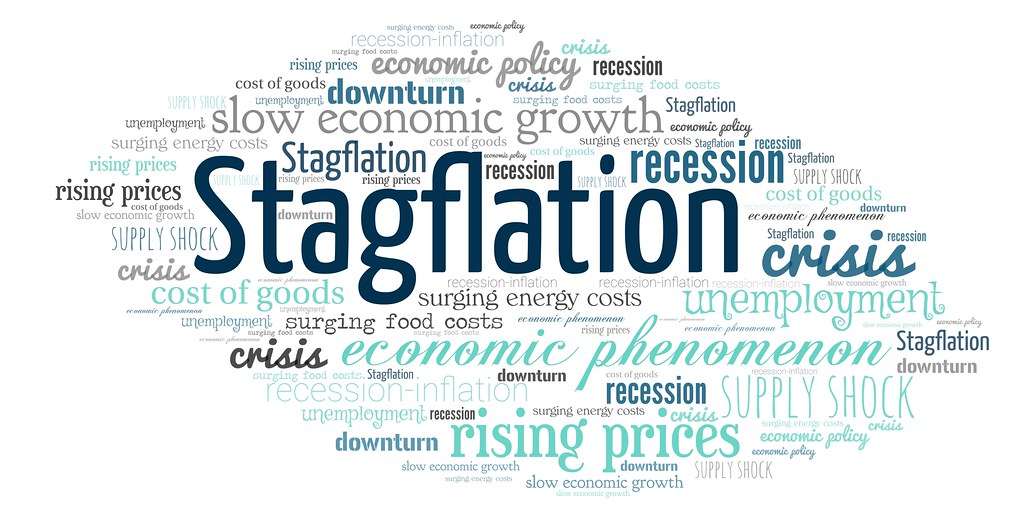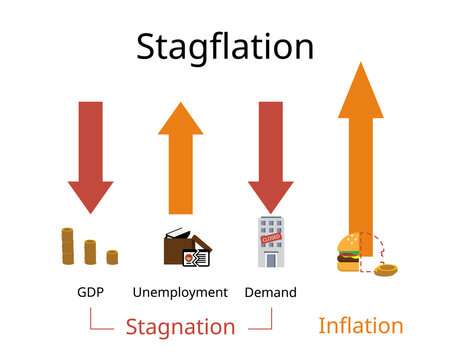Theme:
World Bank’s President David Malpass warned about Stagflation in upcoming times. The term emerged during the 1973-1975 recession.

What is Stagflation:
Stagflation is an economic condition where there is a high rate of unemployment along with rising inflation and slow growth in the economy.
It occurs when there is a simultaneous appearance of all these three aspects in an economy. Inflation drives prices up but purchasing power down, as spending the same amount of money gets you less value as prices go up.
Which means economic growth has slowed dramatically or ground to a halt, with high unemployment, a drop in the Gross Domestic Product (GDP), slumping wages, and other factors.
Stagflation = High unemployment + Inflation + Economic slowdown
Causes of Stagflation:
- In general, It occurs when a supply shock occurs.
Example:- Disruption in the oil supply or a shortage of essential parts, which recently occurred during the Covid-19 pandemic with a disruption in the flow of semiconductors that slowed the production of everything from laptops to cars and appliances, etc. worldwide.
- In this kind of unfavorable condition prices of essentials and appliances gets high simultaneously economical growth stops which causes production costly and prices high at the same time.
- Another reason for stagflation can be government policies that harm industry while growing the money supply too quickly. Such as shock affects all the factors that makeup stagflation:
– Inflation
– Unemployment
– Economic Growth
Stagflation vs Inflation:

- In contrast to stagflation, which includes both high prices and higher levels of unemployment, periods of inflation have lower levels of unemployment. This is because consumers and prices adjust their economic behavior to rising price levels either in reaction to or in expectation of monetary policy changes.
- As a result, prices rise in response to expansionary monetary policy without any corresponding decrease in unemployment, while unemployment rates rise or fall based on real economic shocks to the economy.
- During periods of Inflation, the economy simply gets a rise in prices without having any effect on real economic growth.
Example of Stagflation:
It is expensive and challenging to end from a social and financial perspective. History has only a handful of instances of this. The most significant one took place in the United States in the 1970s.
The arrival of economic stagnation in the 1970s was blamed on the US Federal Reserve’s unsustainable economic policy during the boom years of the late 1950s and 1960s. In the 1960s, the Fed took action to maintain low unemployment and increase overall demand for goods and services. However, the decade’s very low unemployment rate resulted in what is known as a wage-price spiral.
The 1973 OPEC oil embargo also contributed to the unfavorable economic occurrence in the United States. The country’s industries were harmed by extremely high oil costs and shortages. New lows in demand resulted in decreased industrial output.
Cure for stagflation:
- It cannot be cured completely. Productivity improvement is one strategy for preventing stagflation because it will boost growth without adding to inflation, which will allow monetary policy to be tightened to control the inflation part of stagflation.
- Governments must achieve a balance between decreasing interest rates, expanding public spending, and other methods of boosting the economy.
Conclusion:
Growth is being negatively impacted by the conflict in Ukraine, China’s curfews, and supply-chain problems, as a result of stagflation which makes it difficult for businesses to operate. Earnings and expenses are both rising. Meanwhile, slow or declining economic development and high unemployment may lead sales to stagnate or fall.It allows management to carefully assess their business and make changes to strengthen it.
Productivity can be increased by businesses using time and money-saving technology. They may reconsider their pricing strategy, consider acquiring or merging with competitors, and bolster their balance sheet. Companies that take such measures to survive stagflation may find themselves in a strong position for growth when the economy improves.
Read more: https://www.economicshelp.org/blog/glossary/stagflation/
Also read:
https://hirednex.com/rise-of-gig-economy-pros-cons-and-future/
